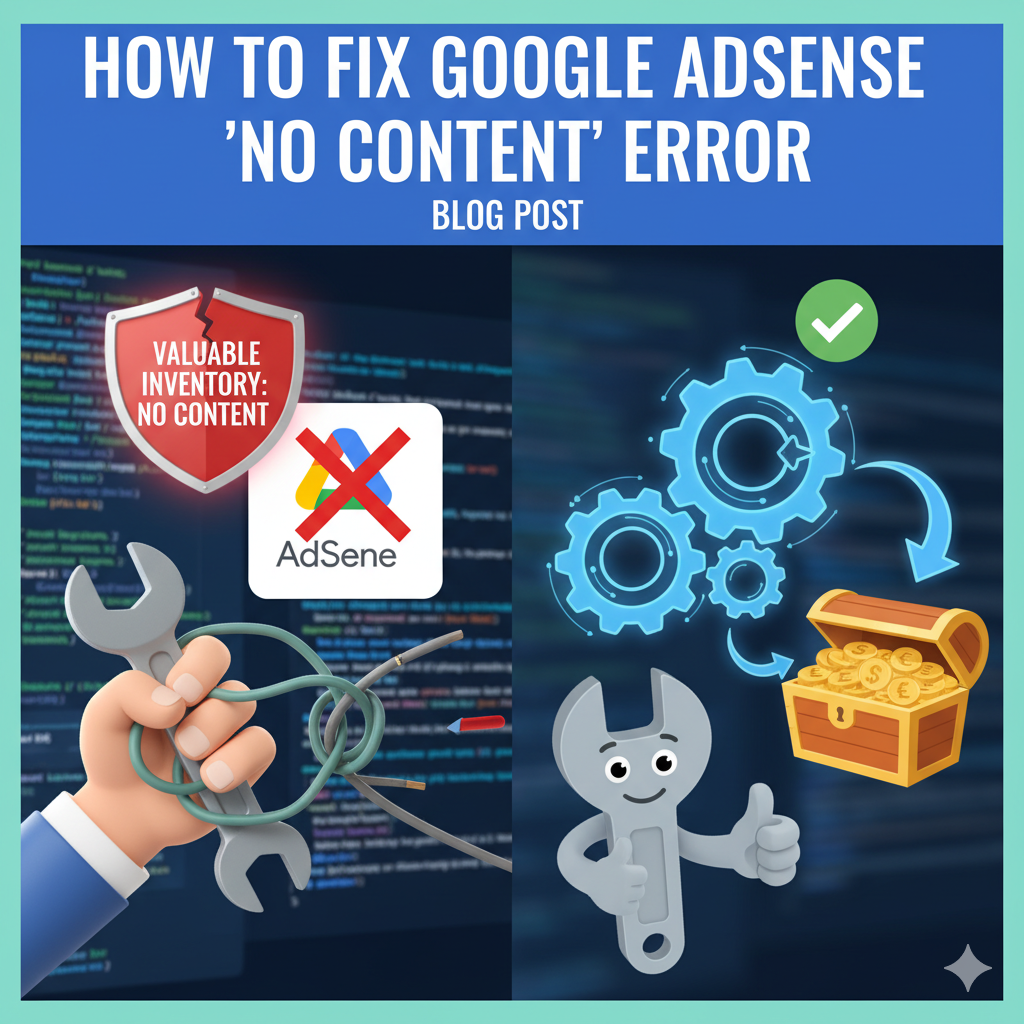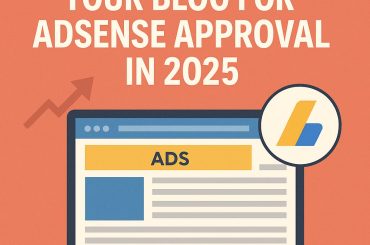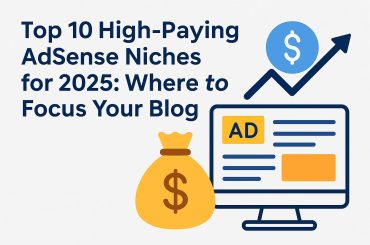How to Fix the ‘Valuable Inventory: No Content’ Error: A Comprehensive Guide
If you’ve encountered the “Valuable Inventory: No Content” error while managing your website or running ads, you’re not alone. This error, commonly seen in platforms like Google AdSense, can be frustrating, especially when it prevents your site from monetizing or ranking effectively. In this guide, we’ll explore what the “Valuable Inventory: No Content” error means, why it occurs, and provide actionable steps to resolve it. This 1500-word article is optimized for SEO, written in a humanized tone, and designed to help website owners, bloggers, and digital marketers overcome this issue.
What is the “Valuable Inventory: No Content” Error?
The “Valuable Inventory: No Content” error is a message from Google AdSense or similar ad platforms indicating that a webpage lacks sufficient content to be considered valuable for advertisers. When this error appears, it typically means that Google’s automated systems have flagged your site or specific pages as having insufficient, low-quality, or non-existent content. This can prevent ads from being displayed or negatively impact your site’s ability to generate revenue.
This issue is critical because it not only affects monetization but can also signal underlying problems with your site’s SEO and user experience. Search engines like Google prioritize content that provides value to users, so resolving this error is essential for maintaining a healthy website.
Why Does the “Valuable Inventory: No Content” Error Occur?
Understanding the root causes of this error is the first step toward fixing it. Here are the most common reasons why this error might appear:
- Empty or Thin Content Pages: Pages with little to no text, such as placeholder pages, blank pages, or pages with only images or videos, are often flagged.
- Under Construction Pages: Pages marked as “under construction” or containing minimal content can trigger this error.
- Duplicate Content: Pages that replicate content from other parts of your site or external sources may be deemed low-value.
- Low Word Count: Pages with insufficient text (e.g., less than 200-300 words) may not provide enough value to users or advertisers.
- Poor User Experience: Pages with broken links, excessive ads, or a cluttered design can be flagged as low-quality.
- Technical Issues: Problems like incorrect robots.txt settings, noindex tags, or crawl errors can prevent Google from properly indexing your content.
- Scraped or Auto-Generated Content: Content that is automatically generated or copied from other sites often lacks originality and triggers this error.
- Category or Tag Pages: Automatically generated pages (like tag or archive pages) with little unique content are common culprits.
By identifying which of these issues applies to your site, you can take targeted steps to resolve the error.
How to Fix the “Valuable Inventory: No Content” Error
Fixing this error requires a combination of content optimization, technical fixes, and adherence to Google’s guidelines. Below is a step-by-step guide to help you address the issue effectively.
1. Conduct a Content Audit
Start by auditing your website to identify problematic pages. Use tools like Google Search Console, Screaming Frog, or Ahrefs to crawl your site and pinpoint pages with thin content, duplicate content, or indexing issues.
- Check for Thin Content: Look for pages with less than 300 words or those lacking meaningful information. For example, a product page with only a title and price is unlikely to pass Google’s quality checks.
- Identify Duplicate Content: Use tools like Copyscape or Siteliner to detect duplicate content across your site or from external sources.
- Review Tag and Category Pages: If your site generates automatic tag or category pages, ensure they have unique, descriptive content rather than just lists of links.
Actionable Tip: Create a spreadsheet to track problematic pages, noting their URL, word count, and issues (e.g., thin content, duplicate content). This will help you prioritize fixes.
2. Enhance Content Quality
Once you’ve identified pages with issues, focus on improving their content. High-quality content is engaging, informative, and user-focused. Here’s how to enhance your pages:
- Add Valuable Text: Aim for at least 500-1000 words on key pages, depending on the topic’s complexity. Include relevant information that answers user queries. For example, a blog post about “best running shoes” should include detailed reviews, comparisons, and user tips.
- Incorporate Multimedia: Add images, videos, infographics, or charts to make your content more engaging. Ensure all media is optimized with alt text for SEO.
- Use Proper Formatting: Break up text with headings (H2, H3), bullet points, and short paragraphs to improve readability.
- Include Keywords Naturally: Research relevant keywords using tools like Google Keyword Planner or SEMrush. Incorporate them into your content naturally, avoiding keyword stuffing.
Pro Tip: Write for your audience first, not just for search engines. Content that genuinely helps users is more likely to pass Google’s quality checks.
3. Fix Technical Issues
Technical problems can prevent Google from properly crawling or indexing your content, leading to the “No Content” error. Check the following:
- Robots.txt File: Ensure your robots.txt file isn’t blocking important pages. Use Google Search Console’s “Robots.txt Tester” to verify.
- Noindex Tags: Check for accidental “noindex” tags in your page’s HTML or meta tags, which prevent Google from indexing the page.
- Crawl Errors: Use Google Search Console to identify crawl errors, such as 404 (not found) or 500 (server) errors, and fix them promptly.
- Site Speed: Slow-loading pages can negatively impact user experience and SEO. Use tools like Google PageSpeed Insights to optimize load times.
Actionable Tip: Submit an updated sitemap to Google Search Console after fixing technical issues to ensure Google re-crawls your site.
4. Optimize Category and Tag Pages
Category and tag pages are common culprits for the “No Content” error, especially on WordPress sites. These pages are often auto-generated and contain little unique content. To fix this:
- Add Descriptive Text: Write a unique introduction (100-200 words) for each category or tag page, explaining its purpose and relevance.
- Limit Tag Pages: Avoid creating too many tags, as they can dilute your site’s content quality. Use plugins like Yoast SEO to manage tags effectively.
- Noindex Low-Value Pages: If certain tag or category pages aren’t essential, consider adding a “noindex” tag to prevent Google from crawling them.
Pro Tip: Use category pages to showcase curated content, such as a “Best Recipes” category with a detailed introduction and links to top-performing posts.
5. Remove or Consolidate Thin Pages
If your site has pages with little to no value (e.g., placeholder pages or outdated posts), take action:
- Delete Irrelevant Pages: Remove pages that serve no purpose or can’t be improved. Set up 301 redirects to guide users to relevant content.
- Consolidate Content: Combine thin pages into a single, comprehensive page. For example, merge multiple short blog posts on similar topics into one in-depth guide.
- Update Outdated Content: Refresh old posts with new information, updated keywords, and improved formatting.
Actionable Tip: Use Google Analytics to identify low-traffic pages that may need updating or removal.
6. Follow Google AdSense Policies
If you’re encountering this error in Google AdSense, ensure your site complies with their policies:
- Avoid Prohibited Content: Ensure your site doesn’t contain adult content, copyrighted material, or other policy violations.
- Limit Ads: Too many ads can overwhelm users and lead to a poor experience. Aim for a balance between ads and content.
- Provide a Clear Navigation Structure: Make it easy for users to find content with a logical menu and internal linking structure.
Pro Tip: Review Google AdSense’s Program Policies regularly to stay compliant and avoid penalties.
7. Monitor and Test Changes
After making changes, monitor your site’s performance to ensure the error is resolved:
- Resubmit Pages: Use Google Search Console’s “URL Inspection” tool to request re-indexing of updated pages.
- Track AdSense Status: Check your AdSense account for updates on the error status. It may take a few days for Google to review changes.
- Use Analytics Tools: Monitor traffic, bounce rates, and user engagement with tools like Google Analytics to ensure your fixes are effective.
Actionable Tip: Set up alerts in Google Search Console to be notified of new errors or issues.
Common Mistakes to Avoid
When addressing the “Valuable Inventory: No Content” error, steer clear of these pitfalls:
- Keyword Stuffing: Overloading content with keywords can harm SEO and user experience.
- Ignoring User Intent: Ensure your content aligns with what users are searching for.
- Neglecting Mobile Optimization: With mobile traffic dominating, ensure your site is mobile-friendly.
- Failing to Update Regularly: Outdated content can lose relevance over time, so schedule regular audits.
Tools to Help You Fix the Error
Here are some tools to streamline the process:
- Google Search Console: Identify crawl errors, indexing issues, and flagged pages.
- Screaming Frog: Crawl your site to find thin or duplicate content.
- Yoast SEO or Rank Math: Optimize WordPress sites for SEO and manage tag/category pages.
- Ahrefs or SEMrush: Conduct keyword research and analyze competitor content.
- Google PageSpeed Insights: Improve site speed and user experience.
Conclusion
The “Valuable Inventory: No Content” error can be a setback, but it’s fixable with the right approach. By conducting a thorough content audit, enhancing page quality, fixing technical issues, and adhering to platform policies, you can resolve the error and improve your site’s performance. Regularly monitor your site’s health and prioritize user-focused content to prevent this issue from recurring.
By following the steps outlined in this guide, you’ll not only fix the error but also build a stronger, more valuable website that ranks well and attracts advertisers. If you’re still facing issues, consider consulting an SEO expert or reaching out to Google AdSense support for further assistance.
Ready to fix the “Valuable Inventory: No Content” error? Start with a content audit today and watch your site thrive!






